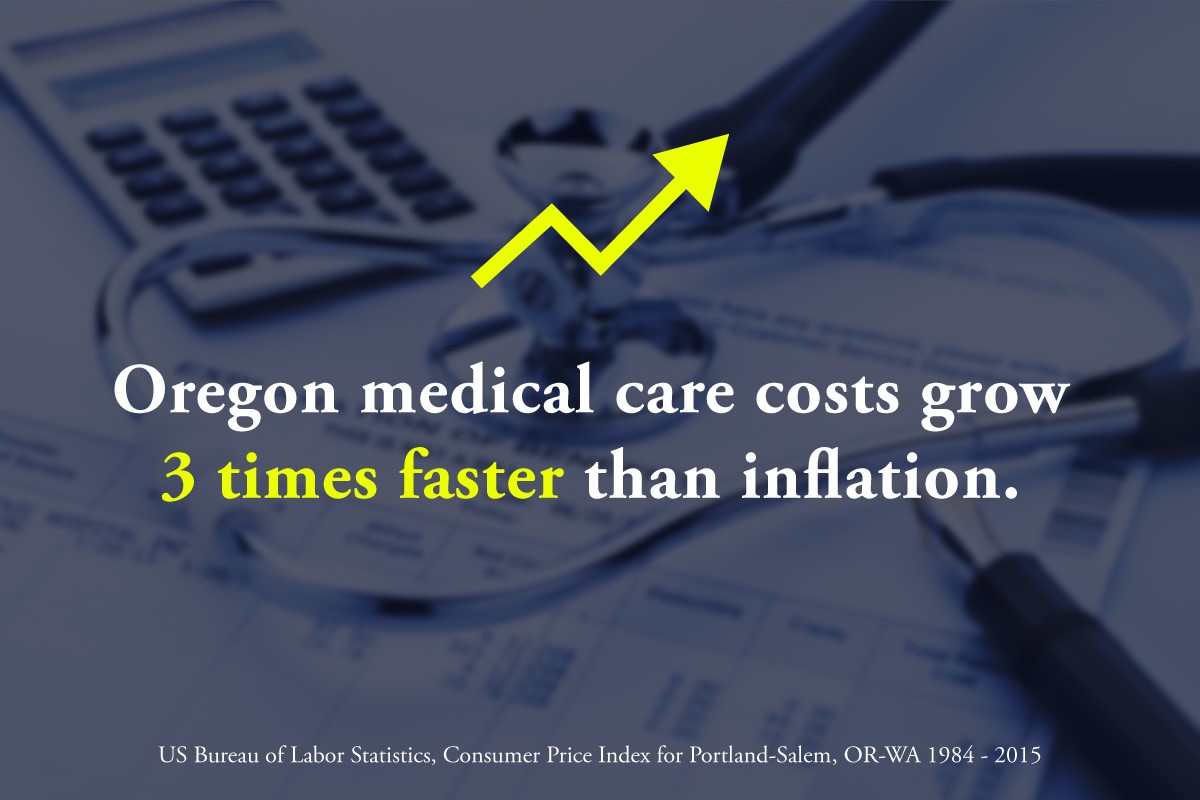
Nearly three out of four Oregon voters surveyed in January 2016 believe their health care costs will escalate in the coming years.
Their fears are rooted in reality. Medical costs in the Portland and Salem metro areas spiked 5.2 percent in 2015, twice the rate as the national average, according to the U.S. Bureau of Economic analysis. Medical inflation in the Portland and Salem metro areas increased last year at twice the rate of the national average, which was 2.6 percent.
Despite such discouraging data, research by a professor at the University of Oregon shows that informed consumers can help bring costs down.
Oregon costs run higher than average
Between 2000 and 2015, medical costs in the two Oregon metros grew three times faster than overall inflation, which was slightly higher than 1 percent.
The federal government measures the medical costs consumers pay as part of its Consumer Price Index, which includes housing, food and other expenses. The medical category captures what people spend for doctors, hospital services, medicines, health insurance and other related services. The data show medical costs in Portland and Salem have run higher than the national average for much of the past two decades.
Voices contacted seven economists in Oregon and at federal agencies and they were hard-pressed to explain exactly why Oregonians experienced higher rates of medical cost inflation.
Peter Graven, a health economist at the Center for Health Systems Effectiveness at Oregon Health & Science University, said there is not enough localized data to draw firm conclusions.
Generally, economists say prescription drugs, hospital-related services and insurance costs factor into the overall cost of health care.
Economists note that Oregon’s health care landscape is changing with the expansion of Medicaid and the creation of new coordinated care organizations two years ago.
Today nearly 90 percent of Oregonians are now covered by health insurance, either through a private insurer, Medicare or Medicaid through the Oregon Health Plan. But people continue to worry about their medical bills.
A January 2016 survey of 500 Oregon voters for Cambia Health Solutions found 73.4 percent of respondents believed health care costs “will escalate in the near future.” Just 4.2 percent thought costs would fall.
Consumers play a role in bringing costs down
There is hope, along with a growing body of research indicating what policymakers, health care providers and consumers can do to combat higher costs: Help patients become more informed and involved in their health and health care.
Judith Hibbard, professor emeritus with the Health Research Group at the University of Oregon, found that the medical costs of patients who were more knowledgeable, skilled and confident about managing their day-to-day health and health care were sometimes substantially lower than patients who lacked this skill or confidence.
Hibbard led a 2013 study that analyzed electronic medical records data from 33,163 adults who were part of a large health care delivery system in Minnesota. Researchers measured the patients on a 0 to 100 scale based on their agreement with statements such as: “I know how to prevent problems with my health.” Or, “I am confident that I can tell a doctor my concerns, even when he or she does not ask.”
The results showed that average health care costs were 8 percent to 21 percent higher for patients who did not play an active role in their care (those who scored 25 or under).
“We know that people who score higher have better health behaviors, more screening, engage more in positive behaviors, more likely to ask questions. And more likely to adhere to medications that are prescribed to them,” Hibbard said.
The takeaway message for health care policy makers, providers and consumers who want high-quality, affordable care: “Patients are part of the solution.”